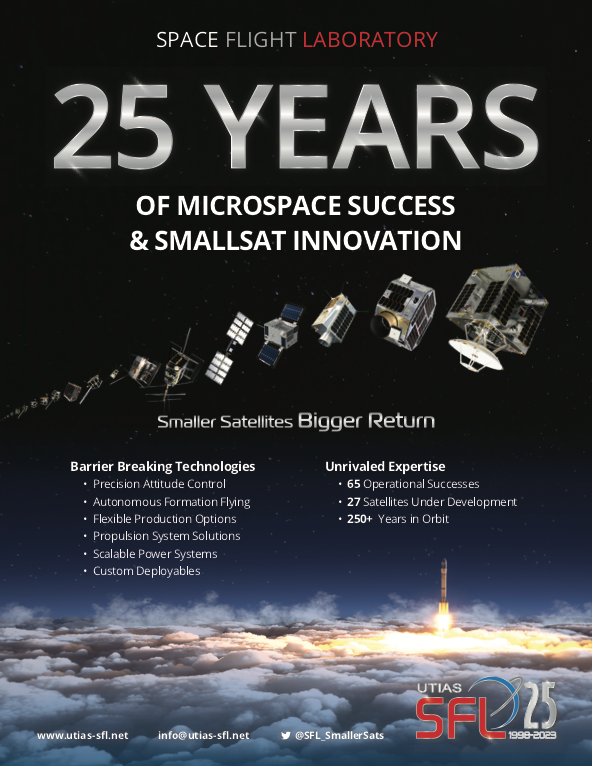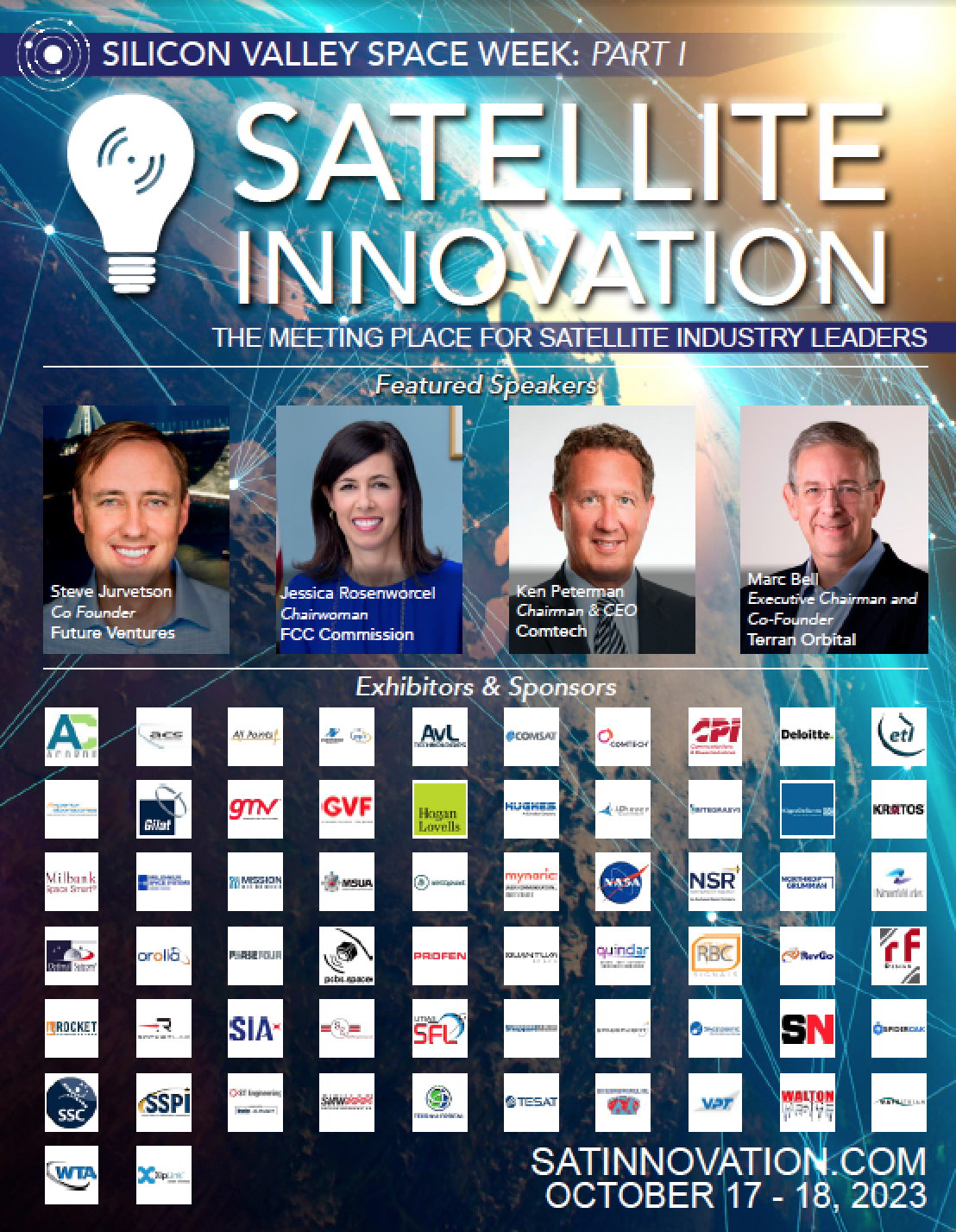In addition to rockets and humans traveling to space, the satellite industry has embarked on another journey, of sorts — the one of digital transformation. What started with software-defined satellites and proliferated constellations in orbit, offering newfound levels of flexibility, is now driving change throughout the ground.

We’re hearing more about digitization, virtualization, software-defined networks, orchestration and other, similar terms. While these are all part of the digital ground, each refers to something that enables agility at a different level, whether from an infrastructure, network, or service perspective. It is when combined cumulatively, they enable digital transformation to the fullest extent to support the most dynamic envrionments.
These aren’t exactly new concepts, but they are new to satellite. They originated in telecom and IT to solve scale and flexibility challenges and are now being adapted and adopted to transform the ground segment’s limitations with its more static, analog hardware environment.
Gartner refers to digital transformation as the use of digital technologies to change a business model that can provide new revenue and value-producing opportunities. By moving to a digital business, organizations can better adapt to change and become customer-driven, end-to-end.
The simple version of the digital ground is about moving from analog RF to digital IP, virtualizing hardware to software and automating processes as much as possible. That enables all the efficiency, speed, scale, and automation to unlock more flexible and reconfigurable software-defined satellites on one side, and to better integrate with terrestrial telcos and wireless networks on the other.
The Digital Path Ahead
Satellite operators and network service providers will implement digital operations at their own pace and in ways that meet their unique mission goals and business models. That might be to become more agile in a digital, data driven world, to reduce reliance on hardware and scale in the cloud, to provision and deliver new services faster, to leverage 5G…or all of the above. That’s why it helps to understand how these concepts work together in progression to that end.
Digitization: the digital on-ramp and data agility
To enter the digital realm, the first step is digitization. This converts analog RF signals into digital packets.
With advances in sampling and other techniques, RF signals represented as ‘bits’ can be sent over mainstream IP networks any distance. This enables the shift from coaxial cable to Ethernet, decouples RF from the ground station, and provides an onramp in order to operate in a digital environment.
The Caveat
For digitization to succeed industry-wide without creating incompatibility, digitized spectrum must be packaged into IP packets in a uniform, standardized way so they can be transported interoperably across networks, operators, and equipment. The industry is uniting around this all important first step by adopting a Digital IF/RF standard put forth by the DIFI Consortium. TheDIFI standard will enable satellite operators across the ecosystem, both commercial and government, to confidently design, build, and operate multi-vendor satellite networks and ground systems knowing they will work together.
With spectrum digitized at the antenna, it can be instantly changed, transported, and dynamically processed in a virtualized environment like the cloud.
Virtualization: replacing hardware with software for Infrastructure agility
Virtualization abstracts the processes performed by dedicated hardware to open flexible software.
Now most of the ground station can be virtualized — the racks of splitters, combiners, channelizers, modulators and demodulators and more can be replaced with functionally equivalent Virtual Network Functions, or VNFs.
As bits of software that run on commodity compute, VNFs can be linked together in complete service chains to support a service or mission. This turns the traditional teleport filled with special-purpose equipment into a multi- purpose data center with antennas that can support different types of satellites and applications. Operators can now flexibly scale processing on generic servers onsite, elastically in the cloud, or in a distributed hybrid fashion, without having to integrate incompatible vendor equipment and stove-piped systems.
Earth Observation (EO) and Ground Station as a Service (GSaaS) providers are growing globally in part by taking advantage of virtualization to speed provisioning and to realize other cost and performance benefits. For example, where it can take weeks to provision a service in hardware that must be shipped and configured at remote sites, VNFs can be spun up instantly to reduce provisioning time and make both logistics and configuration simpler.
The Caveat
While virtualization makes ground infrastructure agile, that in itself is not what makes the network truly dynamic. By virtualizing as much ground infrastructure as possible, the VNFs can be flexibly controlled in a software-defined network for more dynamic operations in response to any type of change.
Software-Defined Networking for network agility
Software-defined networking takes the static nature of traditional networks and makes them dynamic.
SDN enables the network to be intelligently and centrally controlled, or ‘programmed,’ using software applications. This helps operators manage the entire network — making the network more flexible and easier to manage. The SDN controller, the central point of control or ‘intelligence’ for the network, dynamically provisions and configures the VNFs, linking them into services to perform the digital signal processing, and directs the traffic to manage and optimize the network.
SDN architecture allows operators to quickly respond to changing network demands, such as spikes in traffic or easily deploy new requirements or services. A network built in software with SDN and VNFs makes it possible to quickly reconfigure and adapt to change, whether shifts in time-of-day usage and peak demand, interference, or network congestion.
On cruise ships, for example, where demand for capacity ebbs and flows depending on whether a ship is in port or at sea and when passengers are online, the SDN and VNFs can be used to create dynamic networks that can adjust to changing traffic patterns and needs.
At night, when passengers upload and share video and demand for online connectivity is high, more virtual services can be spun up to support the bandwidth flowing from remote sites over the satellite, and back to the ground. Similarly, when demand falls, the virtual functions are spun down to release processing for other uses.
With SDN, now the software-defined satellites and the digital ground can operate in tandem as a real-time integrated system. Operators can unlock the full potential of high-capacity satellites and reconfigurable payloads to direct beams and bandwidth to where and when they’re needed, driving coordinated change in minutes — not days or weeks as in traditional systems.
If software-defined networking makes the network more dynamic and easier to manage, Orchestration takes it to the next level, providing the uber automation of workflows to deliver services end-to-end.
Orchestration: automation for service agility Service Orchestration applies business logic to automate all the processes to design and deliver services end-to-end.
Used throughout the global telecom industry, orchestration facilitates the seamless provisioning that anyone with a cellphone now enjoys as the gold standard of service. It moves beyond managing a single task to automating many, using software tools and frameworks to streamline processes and workflows. This shifts configuration and management from people and manual processes to technology and automation.
In this new concept of operations, consider how orchestration can manage the near real-time provisioning of services across a network for highly dynamic events such as disaster response, or occasional use for a live news or sporting event.
In those cases, the network comprised of VNFs can be automatically configured and deployed on-demand. When satellite connectivity is needed to support the event or mission, network services are turned up. When they conclude, they are turned down. Orchestration automates the processes, addressing the challenges of speed and complexity that come with real-time change.
As operators scale up networks and services, it is only through automation that they will be able to keep pace. Together, these components of the digital ground — digitization, virtualization, software-defined networking and orchestration — can help satellite enabled service providers to better serve their customers and compete in the global market. They can provision more quickly and flexibly, turning up services elastically on-demand in software to support a wide range of applications and to better tie-in to the global communications grid and now 5G.
The Journey Ahead
As customer demand for data-intensive applications and connectivity continue to increase, satellite operators and network service providers are embracing digital transformation at different levels according to their needs. Although being digital is about 0s and 1s, digital transformation isn’t exactly on or off, all or none. It is more a progression depending on the infrastructure, network, and service agility the operator seeks.

EO providers have been early adopters, taking advantage of ground virtualization to reduce infrastructure and scale in the cloud. SATCOM service providers are advancing as well. As we enter an era of more dynamic satellite operations, with users expecting on-demand service, anytime anywhere, they will use software-defined networking and orchestration to provision and automate services end-to-end in just minutes.

With digital transformation now within reach, these terms are no longer industry buzzwords, but real capabilities that will become essential to the future of the satellite industry and its path ahead.
www.kratosdefense.com
Author Stuart Daughtridge is Vice President of Advanced Technology for Kratos, where he leads Kratos’ satellite ground segment technology initiatives, including the planning for the next generation of ground capabilities.




